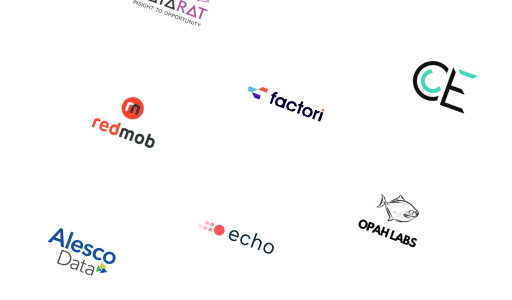What is Online Shopping Data? Examples, Datasets and Providers

- Overview
- Datasets
- Providers
- Use Cases
- Attributes
- FAQ
- Overview
- Datasets
- Providers
- Use Cases
- Attributes
- FAQ
What is Online Shopping Data?
Online shopping data is information collected and analyzed from various online shopping activities. It includes details such as customer demographics, purchase history, browsing behavior, and preferences. This data helps businesses understand consumer trends, personalize marketing strategies, improve product offerings, and enhance the overall online shopping experience.
What Are Examples of Online Shopping Data?
Examples of online shopping data include
- Customer demographics
- Purchase history
- Browsing behavior
- Product reviews
- Transaction details
- and more
Best Online Shopping Databases & Datasets
Here is our curated selection of top Online Shopping Data sources. We focus on key factors such as data reliability, accuracy, and flexibility to meet diverse use-case requirements. These datasets are provided by trusted providers known for delivering high-quality, up-to-date information.

Envestnet | Yodlee's De-Identified Online Shopping Data | Row/Aggregate Level | USA Consumer Data covering 3600+ corporations | 90M+ Accounts

Alesco Consumer Data - Online Purchase Data - 90+ Million Brand Loyal Consumers - Opt-in Emails Available - US Data - Available for Licensing!

Ecommerce Leads Data API | Target Ecommerce Professionals | Drive Online Sales | Best Price Guarantee

Event Data, Local & Online Events, Shows, Concerts, Sports, Workshops | Real-Time API

Factori USA Consumer Graph Data | socio-demographic, location, interest and intent data | E-Commere |Mobile Apps | Online Services

Multi-race Online Conference Video Data | 20000 ID | Annotated Imagery Data
Transact US Fashion & Apparel, Accessories, Footwear Transaction Data | Retail Store Data, Online Data | 100M Credit & Debit Cards, 600 Tickers

US Consumer Demographics | Homeowners & Renters | Email & Mobile Phone | Bulk & Custom | 255M People

Whooz - Whize Shopping Segments - Smart data-use for retailers based on demography, lifestyle and behaviour of all 8M NL households

Alesco Newly Engaged - 75K+ US based addresses of people who are engaged in the last month. Licensing Available!
Can't find the data you're looking for?
Let data providers come to you by posting your request
Post your request
Top Online Shopping Data Providers & Companies
Popular Use Cases for Online Shopping Data
Online Shopping Data is essential for a wide range of business applications, offering valuable insights and driving opportunities across industries. Below, we have highlighted the most significant use cases for Online Shopping Data.
Main Attributes of Online Shopping Data
Below, we outline the most popular attributes associated with this type of data—features that data buyers are actively seeking to meet their needs.
| Attribute | Type | Description | Action |
|---|---|---|---|
| String | The name of a country. | View 37 datasets | |
| String | The name of a city. | View 36 datasets | |
| Float | The latitude of a point on earth's surface. Commonly abbreviated as "lat". | View 36 datasets | |
| String | The address of a company or contact (street name, number, zip code, city, county, country). | View 35 datasets | |
| String | The name of a brand. | View 35 datasets | |
| Float | The longitude of a point on earth's surface. Commonly abbreviated as "long". | View 34 datasets |
Frequently Asked Questions
How is the Quality of Online Shopping Data Maintained?
The quality of Online Shopping Data is ensured through rigorous validation processes, such as cross-referencing with reliable sources, monitoring accuracy rates, and filtering out inconsistencies. High-quality datasets often report match rates, regular updates, and adherence to industry standards.
How Frequently is Online Shopping Data Updated?
The update frequency for Online Shopping Data varies by provider and dataset. Some datasets are refreshed daily or weekly, while others update less frequently. When evaluating options, ensure you select a dataset with a frequency that suits your specific use case.
Is Online Shopping Data Secure?
The security of Online Shopping Data is prioritized through compliance with industry standards, including encryption, anonymization, and secure delivery methods like SFTP and APIs. At Datarade, we enforce strict policies, requiring all our providers to adhere to regulations such as GDPR, CCPA, and other relevant data protection standards.
How is Online Shopping Data Delivered?
Online Shopping Data can be delivered in formats such as CSV, JSON, XML, or via APIs, enabling seamless integration into your systems. Delivery frequencies range from real-time updates to scheduled intervals (daily, weekly, monthly, or on-demand). Choose datasets that align with your preferred delivery method and system compatibility for Online Shopping Data.
How Much Does Online Shopping Data Cost?
The cost of Online Shopping Data depends on factors like the datasets size, scope, update frequency, and customization level. Pricing models may include one-off purchases, monthly or yearly subscriptions, or usage-based fees. Many providers offer free samples, allowing you to evaluate the suitability of Online Shopping Data for your needs.
What Are Similar Data Types to Online Shopping Data?
Online Shopping Data is similar to other data types, such as Consumer Review Data, Product Data, Ecommerce Data, Online Purchase Data, and Ecommerce Store Data. These related categories are often used together for applications like Ecommerce Intelligence.







